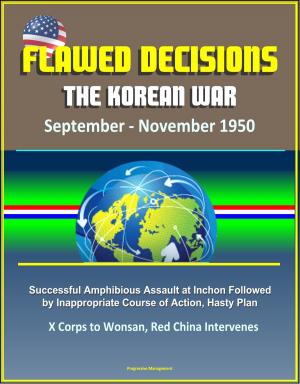21st Century FEMA Study Course: Building for the Earthquakes of Tomorrow (IS-8.a) - Earthquake Causes and Characteristics, Effects, Protecting Your Community, Hazard Reduction
Nonfiction, Science & Nature, Science, Earth Sciences, Social & Cultural Studies, Political Science| Author: | Progressive Management | ISBN: | 9781458192752 |
| Publisher: | Progressive Management | Publication: | June 16, 2011 |
| Imprint: | Smashwords Edition | Language: | English |
| Author: | Progressive Management |
| ISBN: | 9781458192752 |
| Publisher: | Progressive Management |
| Publication: | June 16, 2011 |
| Imprint: | Smashwords Edition |
| Language: | English |
This vital Federal Emergency Management Agency (FEMA) independent training course manual from the Emergency Management Institute (EMI) deals with implementation of seismic safety rules to make buildings safe during earthquakes.
Since the Earthquake Hazards Reduction Act was passed in 1977, many actions have been taken to improve seismic safety. Executive Order 12699, “Seismic Safety of Federal and Federally Assisted or Regulated New Building Construction,” signed by President Bush in January 1990 is a significant Federal seismic risk reduction action. This Executive Order requires all new Federal, federally assisted, and federally regulated buildings to be appropriately seismic resistant. Among new construction affected are all buildings financed, either partially or fully, with Federal grants or federally guaranteed loans.
Because this Executive Order is so wide reaching, covering everything from single-family dwellings to large Federal complexes across the nation, a training course was needed to provide the tools, information, and planning guidance for those people affected by the Executive Order. The purpose of this course is to provide individuals in State and local governments, and the building and financial industries, with information about the requirements of the Executive Order and how they will be implemented. The course is also intended to provide the student with basic knowledge about earthquakes and how buildings can be built to be safe during an earthquake.
The goal of this training course is to provide the students with the tools, information, and planning guidance they need to effectively deal with and prepare for the implementation of the Executive Order and its consequences.
At the conclusion of this course, the student will be able to:
Describe the intent and implications of the Executive Order and the consequences of noncompliance; describe how the Executive Order will affect the built environment; describe the theory and practice of the Executive Order, hazard mitigation, and the need/rationale for including seismic provisions in the building codes; compare Executive Order standards and local codes to determine substantive differences and deficiencies; and develop a plan of action to achieve compliance if local codes do not comply with the Executive Order.
As a bonus, this compilation includes Terrorism and Other Public Health Emergencies, A Reference Guide: a comprehensive book covering all aspects of terrorism and the threats posed by biological, chemical, and radiation agents. Planning For The Unthinkable: Preparation And Response In Public Health * Biological Agents * Chemical Agents * Radiation Emergencies * Terrorism And The Food Supply * Environmental Safety And Testing * The Role Of The Federal Government * Self-Care For Media * Range Of Public Reactions * Risk Communications During A Terrorist Attack Or Other Public Health Emergency * History Of Biological, Chemical, And Radiation Emergencies * Acronyms * Selected Web Sites * Epidemiology Glossary * Descriptions of Selected Sections of Acts Related to Public Health Emergencies * Family Disaster Planning—Five Steps to Safety * Disaster Supplies Kit * Personal Workplace Disaster Supplies Kit * Self-Monitoring Checklist * Reducing Stress and Renewing Energy * Helping Children and Adolescents Cope with Violence and Disasters.
This vital Federal Emergency Management Agency (FEMA) independent training course manual from the Emergency Management Institute (EMI) deals with implementation of seismic safety rules to make buildings safe during earthquakes.
Since the Earthquake Hazards Reduction Act was passed in 1977, many actions have been taken to improve seismic safety. Executive Order 12699, “Seismic Safety of Federal and Federally Assisted or Regulated New Building Construction,” signed by President Bush in January 1990 is a significant Federal seismic risk reduction action. This Executive Order requires all new Federal, federally assisted, and federally regulated buildings to be appropriately seismic resistant. Among new construction affected are all buildings financed, either partially or fully, with Federal grants or federally guaranteed loans.
Because this Executive Order is so wide reaching, covering everything from single-family dwellings to large Federal complexes across the nation, a training course was needed to provide the tools, information, and planning guidance for those people affected by the Executive Order. The purpose of this course is to provide individuals in State and local governments, and the building and financial industries, with information about the requirements of the Executive Order and how they will be implemented. The course is also intended to provide the student with basic knowledge about earthquakes and how buildings can be built to be safe during an earthquake.
The goal of this training course is to provide the students with the tools, information, and planning guidance they need to effectively deal with and prepare for the implementation of the Executive Order and its consequences.
At the conclusion of this course, the student will be able to:
Describe the intent and implications of the Executive Order and the consequences of noncompliance; describe how the Executive Order will affect the built environment; describe the theory and practice of the Executive Order, hazard mitigation, and the need/rationale for including seismic provisions in the building codes; compare Executive Order standards and local codes to determine substantive differences and deficiencies; and develop a plan of action to achieve compliance if local codes do not comply with the Executive Order.
As a bonus, this compilation includes Terrorism and Other Public Health Emergencies, A Reference Guide: a comprehensive book covering all aspects of terrorism and the threats posed by biological, chemical, and radiation agents. Planning For The Unthinkable: Preparation And Response In Public Health * Biological Agents * Chemical Agents * Radiation Emergencies * Terrorism And The Food Supply * Environmental Safety And Testing * The Role Of The Federal Government * Self-Care For Media * Range Of Public Reactions * Risk Communications During A Terrorist Attack Or Other Public Health Emergency * History Of Biological, Chemical, And Radiation Emergencies * Acronyms * Selected Web Sites * Epidemiology Glossary * Descriptions of Selected Sections of Acts Related to Public Health Emergencies * Family Disaster Planning—Five Steps to Safety * Disaster Supplies Kit * Personal Workplace Disaster Supplies Kit * Self-Monitoring Checklist * Reducing Stress and Renewing Energy * Helping Children and Adolescents Cope with Violence and Disasters.















